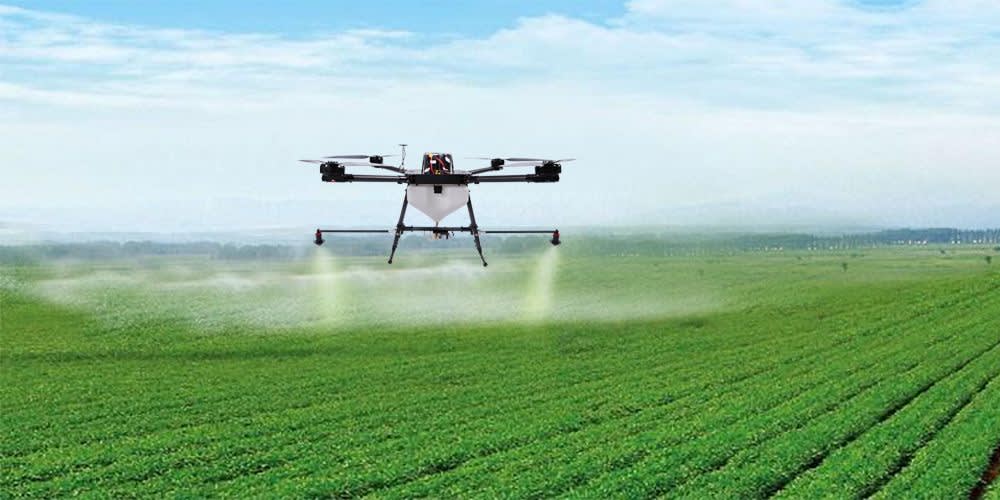There’s a lot more to farming than just planting seeds, watering them and picking them once they’ve grown. And with the widespread adoption of drones, agriculture is getting even more precise and efficient.
1. Fighting Crop Diseases
Drones can be used for multispectral imaging, outfitted with crop health sensors that run NDVI (normalized difference vegetation index). Aerial NDVI sensors aren’t totally new — they used to be outfitted to manned airplanes — but with drones, they are quicker and cheaper.
2. Fertilizer
NDVI is used for more than just analyzing diseases. NDVI images may be able to prescribe fertilizer applications, estimate yields and identify weeds. (NDVI is an important graphical indicator for farmers to analyze remote sensing measurements and assess whether the land contains live green vegetation or not.)
3. NIR Sensors
Similar to NDVI, near-infrared sensors can determine plant health based on light absorption.
4. Pollination
Drone companies such as Bee Innovative have been tracking honeybees in real time for precision pollination. Bee Innovative claims that its “BeeDar” solution has already delivered 20 percent increases in crop yields and returns for farmers season to season. And California-based agriculture technology startup DropCopter allows farmers to pollinate orchards via drones.
5. Food Security
Whether it’s generating more vegetables, fruits or even coffee beans, drones are able to maximize crop yields. There’s no better example of that than the work being done by Lyela Mutisya, who is using drones to help her father’s coffee farm in Kenya. She said many Kenya farms can’t afford fertilizer (a well-managed coffee farm can produce up to 30 pounds of coffee per tree, but a coffee farm that can’t afford fertilizer produces more like 5 pounds of coffee per tree). Drone technology is effective at collecting data to help coffee farmers improve crop health. They can have a role in efficient crop scouting, earlier yield predictions, earlier crop stress detection, enhanced irrigation management and control, and more precise nutrient and chemical applications.
6. Pesticides
And on that note, pest and decision control is very important in coffee farming, as well as all other types of agriculture. Pests can cause an 80% loss in coffee trees. That alone can significantly hurt a coffee farm. If a tree were to get infected and lose 80% of their crop, a drone can help prevent that.
7. Herbicides
In fact, DJI launched its own crop spraying drone back in November 2015.
8. Thermal Cameras
In December 2015, DJI announced a collaboration with Flir Systems Inc., an Oregon-based sensor manufacturer that focuses on thermal imaging. In agriculture, farmers use thermal imaging as they fly over fields to indicate dry spots, over-watering, crop height or pesticide use.
9. Planting Seeds
Companies such as DroneSeed are building drones that can blast fertilizer and seeds into the ground at 350 feet per second. DroneSeed says its solution is good for the environment, worker safety and investors. DroneSeed’s drones currently have a flight time of about 30 minutes; after changing batteries, the drones can cover an acre within 1.5 hours.
View the full article by drone girl here


